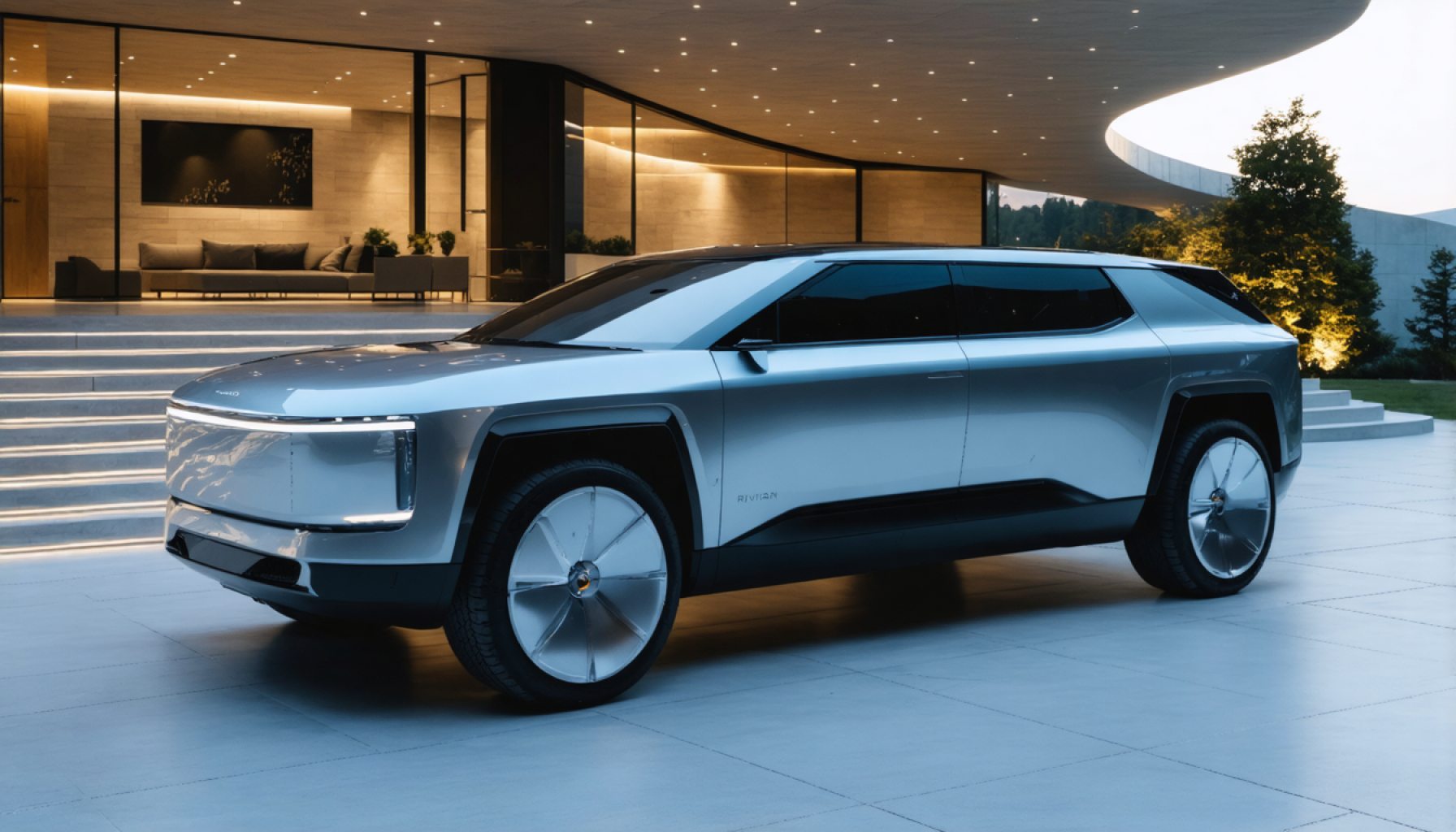- Rivian’s vehicle deliveries significantly dropped in Q1 2025, down to 8,640 from 14,183 in the last quarter of 2024.
- The company remains on track to meet its annual target, aiming to deliver between 46,000 and 51,000 vehicles by the end of the year.
- Production increased, with 14,611 vehicles assembled at its Illinois plant, up from 12,727 in late 2024.
- Rivian is reducing electric van deliveries to Amazon, adjusting its commercial focus.
- The company’s shares fell 2.8% to $11.21 amid general market volatility.
- Rivian aims to balance production momentum with delivery strategy adjustments to stay competitive in the EV market.
- The company’s financial performance and strategic choices will be further revealed with its upcoming financial results on May 6.
Rivian Automotive is navigating choppy waters as it ushers in a challenging 2025. Recent figures reveal a dramatic fall in the electric automaker’s vehicle deliveries, a stark contrast to the bustling end of 2024. From January to March, Rivian delivered 8,640 electric vehicles, down sharply from the 14,183 handed over to customers in the preceding quarter. Despite this setback, the company remains steadfast, reiterating it will meet its annual delivery and production targets, projecting between 46,000 and 51,000 vehicles by year’s end.
Amid these shifting tides, Rivian’s manufacturing capabilities are flexing their muscles. The plant in Normal, Illinois, revved up production, assembling 14,611 vehicles, a noteworthy increase from the 12,727 produced in the last stretch of 2024. This push underscores Rivian’s commitment to bolstering its presence in the competitive electric vehicle market, even as demand dynamics evolve.
A significant aspect of the reduced delivery numbers stems from Rivian’s planned cutback in deliveries of electric vans to Amazon. Earlier, Rivian had ramped up these deliveries to the e-commerce giant but now signals a recalibration of its commercial focus to balance its diverse commitments.
Financially, Rivian’s shares endured a dip, sliding nearly 2.8% to $11.21 amidst broader market volatility spurred by tariff fears. Yet, behind these figures beats the heart of a company aspiring to carve out a substantial piece of the future EV landscape. As Rivian gears up to disclose its financial results on May 6, the industry watches with bated breath, eager to gauge its strategic maneuvers and resilience.
For Rivian, the key takeaway lies in its dual focus on maintaining production momentum while adapting its delivery strategies to the evolving market landscape. This adaptability could spell the difference between a stumble and a stride forward in this pivotal year.
Rivian’s Road Ahead: Can They Navigate the EV Market Challenges?
Navigating Challenges in the EV Landscape
Rivian Automotive is navigating through a critical phase as they face a challenging 2025. Despite a sharp decline in vehicle deliveries—from 14,183 units at the end of 2024 to 8,640 in the first quarter of 2025—the company remains committed to its ambitious annual targets. Let’s explore more about Rivian’s strategies, challenges, and opportunities in the evolving electric vehicle (EV) market.
How Rivian Plans to Overcome Delivery Challenges
1. Manufacturing Expansion: Rivian’s Normal, Illinois plant saw an increase in production, going from 12,727 units at the end of 2024 to 14,611 units in early 2025. This uptick reflects their effort to enhance manufacturing efficiency and support their growth strategy.
2. Recalibration of Commercial Focus: Originally, Rivian intensified its electric van deliveries to Amazon. However, the recent shift in strategy indicates a more balanced approach, allowing Rivian to allocate resources across different market segments more effectively.
3. Market Resilience: Despite a 2.8% dip in share prices amidst market volatility, Rivian is poised to present its financial results on May 6, which could reveal significant strategic pivots.
Real-World Use Cases and Market Trends
– Diverse Product Lineup: Besides electric trucks and SUVs, Rivian is diversifying its product portfolio to meet different needs, including adventure-ready vehicles designed for rugged terrains.
– Sustainability Initiatives: Rivian’s focus on sustainability includes initiatives like carbon-neutral manufacturing processes and a push towards renewable energy sources for vehicle production.
Industry Forecasts and Trends
– EV Market Growth: The global EV market is projected to grow significantly, with increased policy support and consumer demand for sustainable transport options. Rivian’s ability to innovate and scale production rapidly will be critical in capturing market share.
– Strategic Partnerships: Collaborations, like Rivian’s early partnership with Amazon, play a pivotal role in ensuring a stable revenue stream and enabling access to advanced technologies.
Pros and Cons Overview
Pros:
– Strong manufacturing capabilities.
– Innovative product design tailored for various consumer segments.
– Strategic partnerships that enhance credibility and market reach.
Cons:
– Vulnerability to broader market volatility affecting financial performance.
– Dependence on specific contracts, with shifts impacting delivery volumes.
– Intense competition within the rapidly expanding EV market.
Actionable Recommendations for Rivian Enthusiasts
– Stay Informed: Keep track of Rivian’s financial updates and strategic announcements to understand their market moves.
– Consider Sustainability: If purchasing an EV, Rivian’s commitment to sustainability can be a major deciding factor.
– Test Drive: Experience Rivian vehicles first-hand to appreciate their design and performance.
For more information on electric vehicles and market trends, visit Rivian.
In conclusion, Rivian’s journey through 2025 will depend on their ability to adjust to market demands while enhancing production and delivery capabilities. While challenges remain, their strategies to diversify focus and streamline operations could pave the way for future success in the EV sector.
